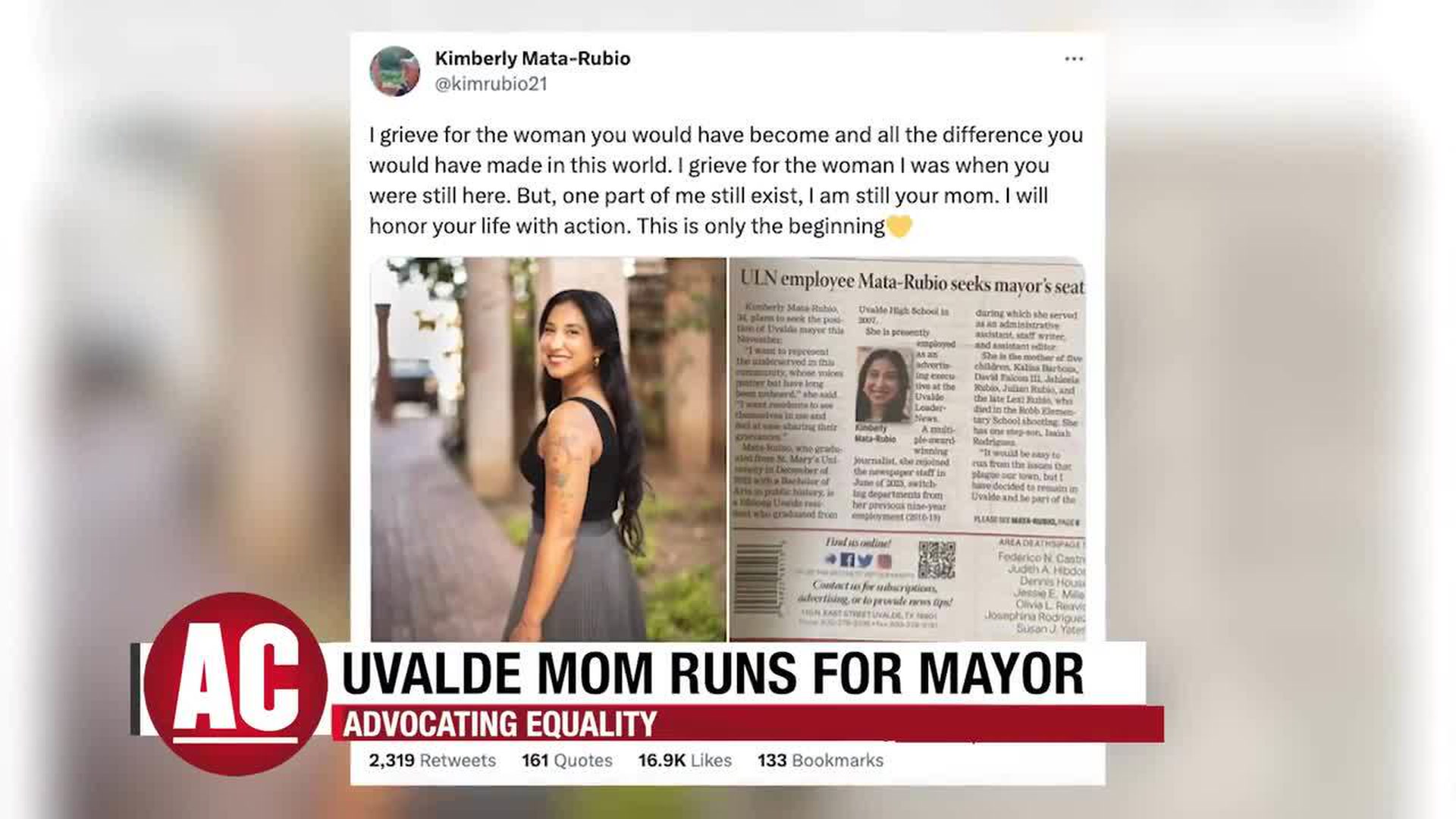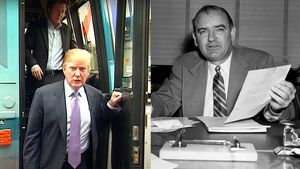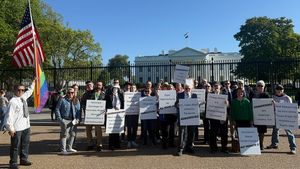(CNN) — Officers had many opportunities as the 2022 school massacre in Uvalde, Texas, was still unfolding to reassess their flawed response to the shooting that left 19 children and two teachers dead, the US Justice Department concludes in a damning new report.
Bursts of gunfire, reports a teacher had been shot, then a desperate call from a student trapped with the gunman could – and should – all have prompted a drive to stop the bloodshed far sooner, the Critical Incident Review released Thursday says.
Instead, it took 77 minutes from when the 18-year-old shooter walked into Robb Elementary School until he was stopped. The carnage remains among the deadliest episodes in America’s ongoing scourge of campus shootings.
Critical failures in leadership among specific law enforcement officers who rushed to Robb Elementary are blamed by the Justice Department, whose 575-page report nearly 20 months after the massacre is the fullest official accounting of what happened, though much already was known largely through CNN investigation.
Ample problems also emerged after the gunman was killed, from getting students away from the school and reunited with families to how bereaved parents were told their children were dead, the release of information about what happened, and the provision of therapy services, the federal report finds.
“The response to the May 24, 2022, mass casualty incident at Robb Elementary School was a failure,” the Justice Department report concludes bluntly.
“Their loved ones deserved better,” US Attorney General Merrick Garland said Thursday of the victims, whose families he met with a day earlier.
“The law enforcement response at Robb Elementary School on May 24, 2022 – and then the hours and days after – was a failure that should not have happened,” he said in an afternoon news conference.
“Had law enforcement agencies followed generally accepted practices in an active shooter situation and gone right after the shooter to stop him, lives would have been saved and people would have survived,” Garland said.
While the report lays out law enforcement actions – and shortfalls – in often-excruciating detail, it also has its limits: The much-anticipated assessment, for instance, does not make recommendations for punitive steps and offers limited introspection of federal forces’ actions. It was requested by the then-mayor of Uvalde, who within weeks of the horror said he feared a “cover-up” and being shut out of other investigations amid changing narratives of what happened that day and who took on key decisions.
Kimberly Mata-Rubio, whose daughter Lexi was killed, fought through tears at a separate news conference Thursday at which victims’ families demanded accountability – and gun reform – to prevent a shooting like the one at Robb Elementary.
“I hope that the failures end today … and that local officials do what wasn’t done that day: Do right by the victims and survivors of Robb Elementary,” Mata-Rubio said, calling for “terminations” and “criminal prosecutions.”
She also called on her “state and federal government (to) enact sensible gun laws,” she said, “because Robb Elementary began the day an 18-year-old was allowed to purchase an AR-15.”
The Justice Department report hopefully will bring more scrutiny to the police response so “not only … people in the United States but around the world will finally see the abysmal failure that law enforcement had here,” Oscar Orona, whose son Noah was wounded, said after Garland met Wednesday with victims’ families to brief them on the report’s contents.
Garland told CNN that in those meetings he heard “enormous pain — as any human being would’ve expressed given what happened to their children and their loved ones.” He added in the exclusive interview that the families “expressed pain, anger and every human emotion that you would expect.”
The families yearn for “accountability,” said Alfred Garza III, whose 10-year-old daughter Amerie Jo Garza was killed. “We want people to be held accountable for what they didn’t do that day.”
“That’s all that’s left to do.”
Amerie Jo’s grandmother, Berlinda Irene Arreola, expressed frustration that authorities implicated in the report are “pointing fingers at each other.”
“No one wants to take responsibility. Nobody wants to take accountability,” Arreola told CNN’s Anderson Cooper Thursday night.
‘Barricaded suspect’ decision was key flaw
The Justice Department report describes the quick arrival of law enforcement officers who ran toward the sound of gunfire, then almost immediately stopped once they got near the classrooms where the gunman was killing fourth graders and educators – a decision that ran counter to widely established active shooter response protocol, which instructs law enforcement to move toward and eliminate any threat.
“Officers on scene should have recognized the incident as an active shooter scenario and moved and pushed forward immediately and continuously toward the threat until the room was entered, and the threat was eliminated. That did not occur,” it says.
Instead, the intensity level dropped as responders began to treat the situation as a “barricaded suspect” operation that did not need immediate action, even as more officers arrived and the signals of ongoing danger multiplied.
That was the “single most critical tactical failure,” the team from the Justice Department’s Office of Community Oriented Policing Services finds.
“For the span of more than 1 hour, between 11:37 a.m. and 12:49 p.m., there were at least 10 stimulus events, including at least six separate instances of gunfire totaling approximately 45 rounds in law enforcement officer presence, as well as officer injuries and the presence of victims. Any one of these events should have driven the law enforcement response to take steps to immediately stop the killing,” the report says.
“During that period, no one assumed a leadership role to direct the response toward the active shooter, provide situational status to responding officers, establish some form of incident command, or clearly assume and communicate the role of incident commander. Interviews with responding officers confirmed that there was confusion about who, if anyone, was in charge, what to do, or the status of the incident.
“Some officers were confused about why there was no attempt to confront the active shooter and rescue the children. Without structure, agency leadership was unaware of the facts surrounding the incident and therefore unable to challenge the repeated decisions not to make entry into the classrooms.”
Local leaders’ critical mistakes singled out
Then-school Police Chief Pete Arredondo, then-acting Uvalde Police Chief Mariano Pargas and Uvalde County Sheriff Ruben Nolasco are singled out for failing to lead. Both were on the scene within minutes, but neither took effective command, the report finds.
Arredondo, whom the Justice Department calls the de facto on-scene commander, even delayed help getting to the children and their teachers in classrooms 111 and 112, thinking they were already dead, the report finds, as CNN has reported.
“He acknowledged the likelihood that there were victims and deceased in the room with the shooter and intentionally prioritized the evacuations over immediate breach and entry into the room,” the report says.
“This is counter to active shooter response principles, which state the priority is to address and eliminate the threat.”
More than one survivor recalled hearing someone say, “Say ‘help’ if you need help,” then a child trying to say “help,” then the gunman shooting the victim, the report states. It wasn’t clear if the shooter or police responders invited the child to call out.
The 911 call from Khloie Torres inside classroom 112 should have changed everything, the Justice Department report finds, but no one effectively questioned what was going on and why active shooter protocol was not being followed to stop the killing and get help to victims.
Some other officers that day were looked on as leaders, including two constables and the US Border Patrol tactical team commander who more than 30 minutes after he arrived led the deadly assault on the gunman.
“Although these individuals at times attempted to direct or coordinate with other law enforcement resources around them, none coordinated to develop a plan to enter classrooms 111 and 112 or establish an incident command structure,” the report says.
Extra criticism is aimed at the sheriff, who had vital information about the gunman he did not share, as CNN first reported.
“Sheriff Nolasco did not seek out or establish a command post, establish unified command, share the intelligence he learned from (the shooter’s) relatives, nor did he assign an intelligence officer to gather intelligence on the subject. At one point, Sheriff Nolasco and UPD Acting Chief Pargas were within 10-15 feet of each other outside the exterior door of the northwest hallway; however, they were not coordinating with one another and continued to act independently,” the Justice Department report says.
“Without proper command and control, a game warden and constable were taking on roles traditionally performed by an incident commander.”
And yet no one challenged them. “On the day of the incident, no leader effectively questioned the decisions and lack of urgency of UCISD PD Chief Arredondo and UPD Acting Chief Pargas toward entering classrooms 111/112.”
Nolasco told CNN Thursday evening that he has yet to thoroughly review the report but said criticism leveled against him is “all false.”
The sheriff declined to comment when asked if he considers his actions on the day of the shootings appropriate. “I can’t comment because of the pending litigation that’s going on,” he said.
In a statement Thursday, the city of Uvalde said it had hired an independent investigator to “conduct a thorough, objective, and credible review” of the city’s involvement in the law enforcement response.
“At every level throughout the review process, the City of Uvalde cooperated and provided extensive information to the Justice Department to ensure a fulsome account of law enforcement’s response from the City’s perspective,” it said, adding it was reviewing the DOJ report.
In a statement, the Texas Department of Public Safety thanked the DOJ for its report. “As DPS Director Steven McCraw first stated in the weeks after the shooting, the law enforcement response that day was an abject failure, and this report’s observations underscore those failures,” the DPS said.
Texas Gov. Greg Abbott also thanked the Justice Department for its findings, saying in his own statement the state had “already adopted and implemented some of the recommendations proposed” in the report.
“We will continue to evaluate all possible means of making our schools safer,” the governor said, “and we will carefully review all other recommendations the Department has offered to prevent future tragedies across our state.”
Medical response and crime scene probe were also flawed
The litany of errors committed by responders that day runs from the early on – with no one checking whether the door connecting the two classrooms was locked, even as that should be “the first immediate approach” – through the scramble after the gunman was killed and into the night when parents were told their children were dead, the Justice Department’s report finds.
The Critical Incident Report is based on analysis of more than 14,100 documents and more than 260 interviews, it says. The team that crafted it visited Uvalde nine times and spent more than 50 days there.
The report talks of “chaos in the hallway” after the gunman’s death that could have been dispelled upon arrival by the regional director of the Texas Department of Public Safety.
“The regional director did not, however, provide direction or coordinate with other leadership personnel in the hallway. Instead, the TXDPS regional director, and some other officers, walked past the law enforcement officers bringing injured and deceased victims out of the classrooms and entered classrooms 111 and 112 with no identifiable purpose or action, therefore compromising the crime scene.”
Emergency medical teams were hampered from doing their job, the report finds.
“EMS staff were not the first to assess the situation in the classrooms and ensure the most appropriate use of critical resources. Deceased victims were moved out of the classrooms, left in or outside of the hallway, or transported to the hospital; at the same time, injured child victims were being tended to or put on school buses with injuries unknown to law enforcement.”
Among other problems with the emergency medical response the report identifies:
Initial crime scene investigation was hampered by too many people going to have a look at classrooms 111 and 112, while the gunman’s hellfire trigger system – only later recovered from a trash can – was not catalogued as evidence because teams didn’t know what it was or its possible relevance, the Justice Department report finds. Further, an FBI offer to process the shooter’s truck before a storm was not accepted, it says, leading to heavy rain compromising evidence there.
Families’ anguish was worsened – and lingers
The Justice Department assessment also looks at how families and the public were told what had happened at Robb Elementary and how an initial narrative of brave first responders saving lives was false.
“Ultimately, this storyline was proved to be inaccurate, and many victims shared that it added to their pain during a challenging time,” it finds.
From a lack of information in Spanish offered to residents of the half-Latino town to erroneous messages posted – and not corrected – by the school district and police, many communication errors have had lasting damage, the report states.
Parents whose children were dead were misled at the civic center-turned-reunification site and at hospitals, it finds: One family member who said they’d been told their child was at the hospital went from staff member to staff member there describing their child, only to be told they were not there – then later finding out the child was deceased and had been at the hospital for hours, unidentified.
At the reunification site, one person asked officials if relatives who remained at the site were the families of the dead because everyone else had been notified. “The leaders told them that this was not the case, when in fact it was,” the report says.
The report notes the district superintendent told a school board member he intended to “honor our families at this time with support, love, and the commitment to move forward as a district for our students.” However, “around the same time,” the district hired as a school police officer a former Texas Department of Public Safety trooper who had been at Robb Elementary during the shooting.
When CNN revealed she had told fellow officers she would have been more active during the massacre if her own son had been inside, shooting victims’ families were outraged – and the district fired her. But “the fact that the decision to hire the former trooper was made in a vacuum without communication to the public further enraged an already skeptical community,” the report says.
And though the Justice Department report marks the most robust effort so far to detail the school shooting nightmare, Uvalde victims’ families still don’t have all the information they need: The local district attorney has not yet completed her inquiry into what happened that day, including whether any law enforcement officer should be criminally charged.
“Several family members indicate they cannot move forward with their lives and do the things they normally need to do until they know what happened to their children,” the Justice Department report says. “Some have asked if their child was alone or near friends. Others want to know if their child would have lived had law enforcement entered the classroom earlier. Many victims and family members have reported that no one has taken accountability for what happened, no one has apologized, nor even acknowledged that the families deserve this information.
“This void of information about the circumstances of the death of their loved ones has contributed to their trauma. Families report they cannot heal without the information they need about what happened to their family members on May 24, 2022, and they are unable to even begin to recover until those in charge are held accountable.”
This is a developing story and will be updated.
Written by Rachel Clarke, Shimon Prokupecz, Hannah Rabinowitz, Aaron Cooper and Dakin Andone. CNN’s Holmes Lybrand, Carolyn Sung and Matthew J. Friedman contributed to this story.
The-CNN-Wire
™ & © 2024 Cable News Network, Inc., a Warner Bros. Discovery Company. All rights reserved.
Mother Of Uvalde victim runs for mayor

Video Source: Advocate Channel


















































